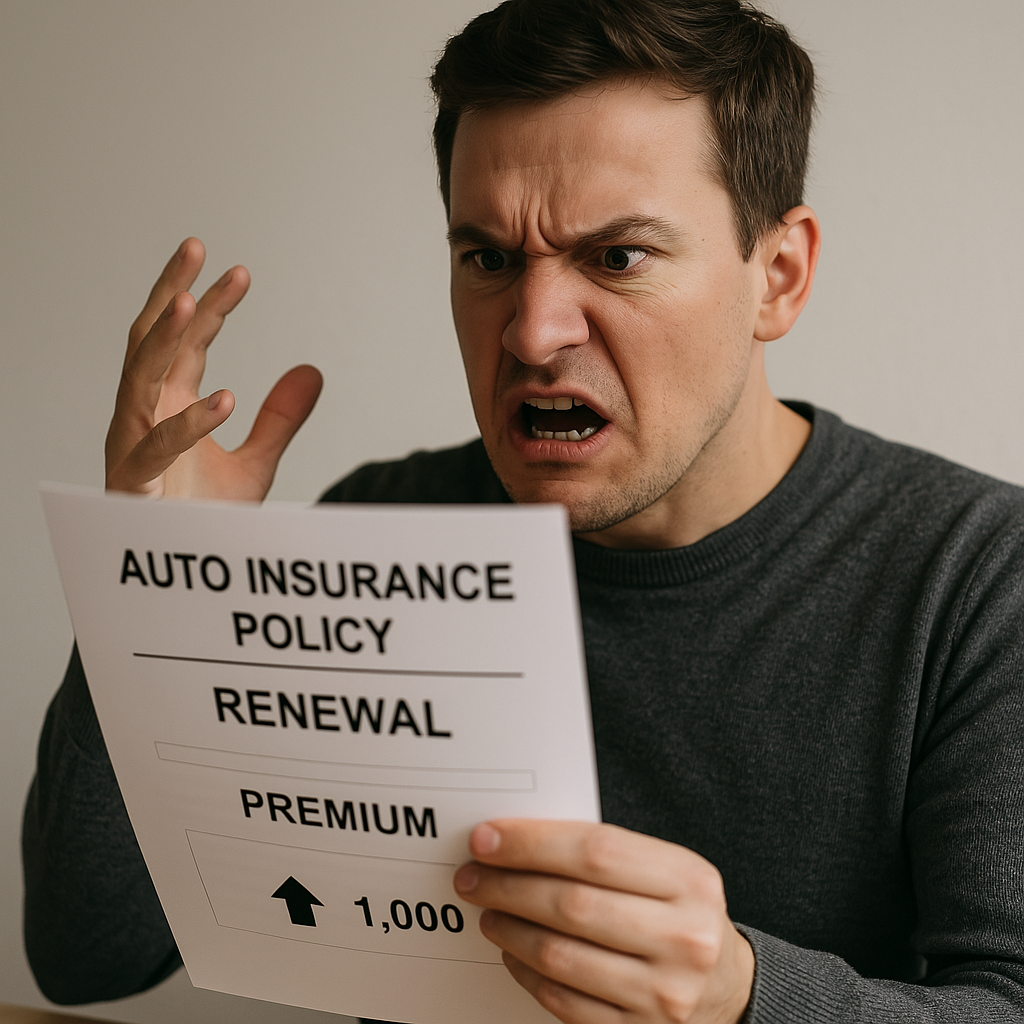You’ve done everything right — you’re a safe driver, your car’s getting older, and you haven’t filed any claims. So why does your car insurance premium still go up every year? Shouldn’t your insurance cost less as your vehicle depreciates?
If you’ve ever felt blindsided by a premium increase, you’re not alone — and you’re not imagining things. In this blog post, we’ll break down the real reasons your auto insurance may be increasing and what you can do about it.
Section 1: The Common Assumption (And Why It’s Wrong)
Most drivers assume that insurance is based primarily on a car’s value. So if the car is worth less each year, shouldn’t the premium drop accordingly?
Not quite.
Reality check: Only part of your premium is based on your vehicle’s value — specifically, comprehensive and collision coverage. The rest is influenced by liability risk, repair cost trends, and inflation. So even as your car depreciates, your total risk profile may not.
Section 2: What Really Drives Your Auto Insurance Costs
Here are the factors insurers actually use to calculate your premiums:
1. Rising Repair Costs
Today’s vehicles — even economy models — are full of advanced tech like sensors, cameras, and ADAS systems. That means repairs are more complex and expensive than ever, even for older vehicles.
2. Medical and Legal Costs
Accidents involving injuries or lawsuits are a major cost for insurers. Rising healthcare and legal settlement costs affect everyone’s premiums, not just those who file claims.
3. Geographic Risk Pools
If you live in an area with high accident rates, vehicle theft, or uninsured drivers, your premium rises — even if you’ve never had an issue.
4. Inflation and Labor Costs
Just like everything else, the cost of auto parts and skilled labor is increasing. Insurers adjust premiums to keep up.
5. Price Optimization (Yes, It’s Real)
Many insurance companies use algorithms to predict how “loyal” you’ll be. If you haven’t shopped around, they assume you won’t — and quietly raise your rate.
Section 3: The Business Owner Perspective
If you’re a small business owner using your vehicle for work, these issues matter even more. You may need commercial auto coverage, hired/non-owned auto insurance, or even an umbrella policy as your business grows.
More importantly, your insurance strategy should fit into a broader risk management plan — not just for your car, but for your business assets, employees, and legal exposure.
Section 4: Common Myths — Busted
Let’s clear up a few persistent misconceptions:
- Myth: Red cars are more expensive to insure.
Fact: Insurers don’t care about color — only make, model, year, and claim history. - Myth: Driving less means huge discounts.
Fact: Low mileage may save you 5–10%, but it won’t dramatically change your premium. - Myth: Staying loyal gets you the best rate.
Fact: Loyalty often leads to price hikes via optimization models.
Section 5: How to Push Back and Save Money
Here are smart steps you can take to protect your wallet:
- Shop around every year — especially before your renewal date.
- Raise your deductible if you have the cash reserves.
- Drop collision and comprehensive coverage if your car is worth less than $3,000–$5,000.
- Ask about hidden discounts — safe driver, veteran, low mileage, bundling.
- Avoid filing small claims — they can cost more in the long run.
- Use an independent broker who can compare multiple policies.
Conclusion:
If your car is losing value, but your insurance keeps going up, don’t assume the system is broken — understand how it works. Insurers’ prices are based on projected risk, not just vehicle value.
As a business owner, your auto policy is just one part of your overall financial risk defense. So, ask questions, challenge assumptions, and build a strategy that protects your personal and business assets.

